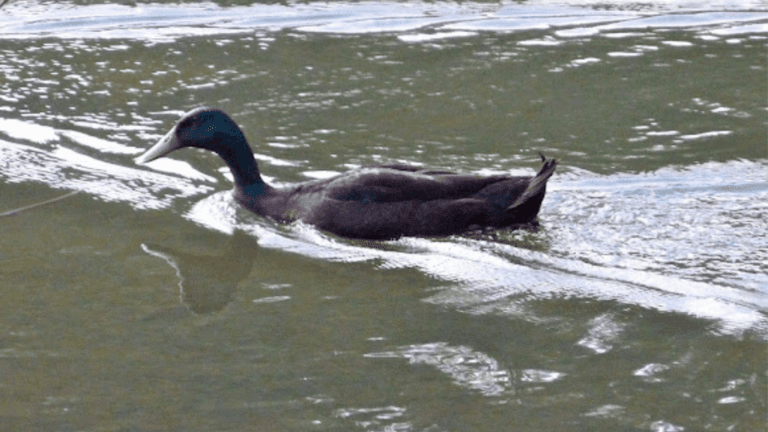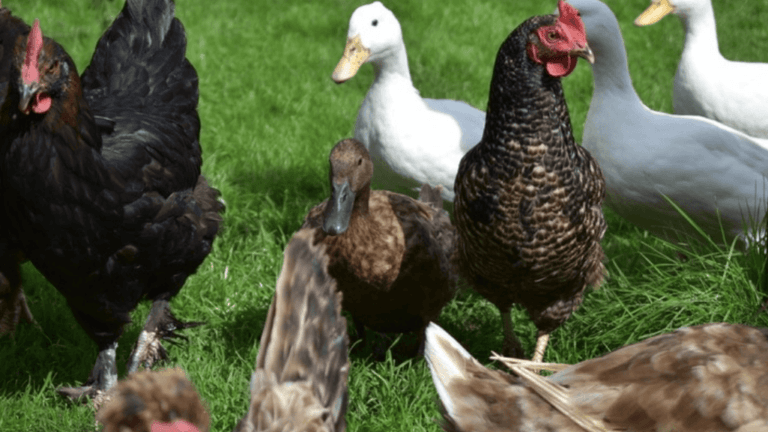Duck leg injuries are a big worry for duck owners and fans. Ducks can get hurt in many ways, like sprains or fractures. Knowing how to spot and treat these injuries is key to keeping ducks healthy.
These injuries can be anything from small strains to serious conditions like bumblefoot. Quick care, like splinting or rehab, is needed to help them heal. This prevents more harm and helps them get better.
Ducks’ legs are weak, making lameness a big problem. Things like bad environments, not enough food, and genetics can hurt their legs. For example, ducklings on wire can get swollen hocks, leading to lameness if not fixed fast.
Ducks can also hurt their legs if they get stuck in fences or other things around them.
Good food is very important for duck leg health. Ducks need special food to avoid lameness. If they don’t get enough, they can grow poorly, not want to move, and even get permanent lameness. Giving them food rich in niacin or adding brewer’s yeast can help. In the wild, they eat foods like worms and small fish that are full of niacin.
If you want to hatch duck eggs, knowing about leg problems is crucial. You need to take steps to keep your ducklings healthy and strong.
Key Takeaways
- Duck leg injuries are common and can range from minor sprains to severe conditions like bumblefoot and spraddle leg.
- Environmental hazards, nutritional deficiencies, and genetic factors can contribute to duck leg impairments.
- Proper nutrition, especially adequate niacin intake, is crucial for maintaining duck leg health.
- Prompt attention and appropriate care, such as leg splinting or rehabilitation, are essential for treating duck leg injuries.
- Understanding the causes, signs, and treatment options for duck leg injuries is vital for ensuring the well-being of these beloved waterfowl.
Understanding Duck Leg Anatomy and Common Injuries
To prevent, diagnose, and treat duck leg injuries, knowing their anatomy is key. Ducks have unique legs that make them prone to certain injuries. Understanding this helps in caring for them.
The Structure of a Duck’s Leg
A duck’s leg has several parts: the femur, tibiotarsus, tarsometatarsus, and phalanges. These bones are connected by joints, allowing movement. Their webbed feet are vital for swimming and walking.
Despite their adaptations, duck legs are weaker than other birds. This weakness leads to lameness, a common issue in ducks.
Most Frequent Types of Duck Leg Injuries
Ducks face various leg injuries, some more common than others. These can stem from environmental hazards, handling mistakes, or health issues. Common injuries include:
- Fractures: These can happen when a duckling’s hock gets caught or a duck’s leg is mishandled.
- Bumblefoot: A bacterial infection causing abscesses on the foot pad, which can harden.
- Sprains and strains: Heavy body mass and weak legs make ducks prone to these injuries.
- Arthritis: Inflammation and pain in joints, especially in older ducks or those with health issues.
- Tendonitis: Pain and reduced mobility from overuse or injury to tendons.
Other injuries include cuts, punctures, and foreign bodies in the footpad. These can lead to inflammation, infection, and pain.
In a study of 2,671 ducks, the prevalence of bumblefoot, a common duck leg injury, was found to be 2.6%, with older ducks being more susceptible to the condition.
Knowing about duck leg anatomy and common injuries helps prevent and treat them. This ensures the health and well-being of your ducks.
Causes of Duck Leg Injuries
Duck leg injuries can come from many sources. These include environmental dangers, not enough nutrients, and genetic issues. Knowing these causes helps in treating and preventing leg problems in ducks.
Environmental Factors
The place where ducks live affects their leg health. Things like rough ground, sharp objects, and high places can hurt their legs. For example, Khaki Campbell ducks might get hurt more because they’re heavy and can’t fly well.
Keeping their living area safe is key. Remove sharp things, make sure it’s clean, and give them good places to walk and swim.
Nutritional Deficiencies
Not getting the right food can also hurt a duck’s legs. Lack of niacin can make ducklings lame and bow-legged. A good diet is important for strong bones and healthy legs.
Food rich in vitamin A, like broccoli and carrots, is good for duck legs. Adding these to their diet can prevent leg weakness and injuries.
Genetic Predisposition
Some ducks are more likely to have leg problems because of their genes. While you can’t change genetics, choosing healthy parents can help. This reduces the chance of leg issues in their offspring.
Regular vet visits can spot genetic problems early. Knowing your ducks’ genetic background helps you take care of their leg health better.
Swimming is also good for ducks. It’s easy on their joints and strengthens their legs. This helps keep their feet and legs healthy.
By fixing their environment, feeding them right, and knowing their genetics, duck owners can lower injury risks. Good care and vet visits help ducks recover and stay active.
Recognizing the Signs and Symptoms of Duck Leg Injury
As a duck owner, knowing the signs of leg injuries is key. Spotting them early can help your duck recover faster. We’ll look at changes in leg appearance and behavior that show a duck might be hurt.
Visible Changes in Leg Appearance
Leg injuries often show up as changes in how the leg looks. Swelling, redness, and abscesses are signs of trouble. Bumblefoot, a foot infection, can cause a black scab. Other signs include:
- Lameness or limping
- Swelling of the hock joint
- Noticeably warm and feverish foot and leg
- Dry, cracked, or peeling skin on the feet or legs
Changes in Mobility and Behavior
Ducks with leg injuries might move differently or act strangely. They often hide injuries to stay safe. Look for these signs:
- Difficulty standing or walking
- Inability to stand or walk at all
- Reluctance to move or walk
- Maintaining a “Superman” position while swimming, with legs extended behind the body
- Decreased activity levels
- Loss of appetite
Early intervention is imperative for successful bumblefoot recovery in ducks.
If you see these signs, act fast. Clean the area, remove any debris, and use a bactericide. For serious injuries, like duck joint injuries or duck sprains, you might need duck splinting techniques or duck wound care. Catching leg injuries early is crucial for your duck’s health.
Treatment Options for Duck Leg Injury
When a duck gets a leg injury, it’s important to treat it quickly and right. The treatment depends on how bad the injury is. It can range from simple care at home to needing a vet. Quick action helps avoid more problems and helps the duck get better.
First Aid and Home Care
For small injuries like cuts or scrapes, basic care at home works. Clean the area with an antiseptic, remove any dirt, and use a bactericide to stop infection. Make sure the duck has clean bedding and fresh water to help it heal.
For bigger injuries, like avian fractures, you might need to bandage the leg. This helps keep it still and helps it heal right.
Veterinary Intervention
For serious injuries, like infections or broken bones, a vet is needed. A vet can figure out how bad the injury is and plan the best treatment. This might include antibiotics or surgery to fix the bone.
In some cases, the vet might need to fix skeletal problems. This is to help with leg issues or joint problems.
Studies show that about 15-20% of ducks get bumblefoot, a foot infection. Quick treatment is key to stop it from getting worse and to save the duck’s life.
Rehabilitation and Physical Therapy
After the vet, the duck might need to get stronger and move better. This can include using splints or doing exercises to help the leg. Physical therapy, like swimming, can also help.
Good care and the right diet are also important. A balanced diet, like game bird feed, helps the duck heal faster. Supplements like brewer’s yeast can also help.
By using first aid, vet care, and therapy, duck owners can help their pets get better. Keeping an eye on the duck and following up with the vet is key to make sure it keeps getting better.
Preventing Duck Leg Injuries
As a duck owner, it’s important to prevent leg injuries. Create a safe space, feed them right, and check their health often. This helps avoid duck leg wounds and keeps your feathered friends happy and healthy.
Creating a Safe Environment
Make sure your ducks have a safe place to live. The ground should be flat and free from sharp things. This prevents injuries to their webbed feet.
Also, give them a clean swimming area. Easy access and gentle ramps help avoid falls. Regular cleaning keeps the area safe from harmful bacteria.
Providing Proper Nutrition
A good diet is key to your ducks’ health. Make sure they get all the nutrients they need. This helps prevent leg problems.
Experts at The Cape Coop say a duck first aid kit should have calcium, electrolytes, and vitamin B-complex. These help prevent leg issues.
Watch out for bad food, like moldy grains. Aflatoxin poisoning is very dangerous for ducks.
Regular Health Check-ups
Regular health checks are crucial. Look for signs of injury or illness in their legs and feet. Early action can prevent bigger problems.
Notice if your ducks are moving differently or seem uncomfortable. This could mean they have a leg injury. Quick vet care can help a lot.
Preventing duck leg injuries is all about being proactive. With the right care and attention, your ducks can stay healthy and happy.
Conclusion
Duck leg injuries can really hurt these birds. With over 2 billion ducks made each year, it’s key for owners to spot duck leg injury signs and act fast. Things like where they live, what they eat, and their genes can cause these problems.
Good food is key to keeping duck legs healthy. Ducks need more niacin than chickens, and not getting enough can cause big issues. They might not want to move or have swollen hocks and bowed legs. Ducks need at least 55 ppm of niacin, and special foods can help them get it.
For serious injuries, ducks might need to see a vet for rehab. Splinting can help fix the leg and help it heal. But, stopping injuries before they start is the best way. Keeping their area safe, feeding them right, and checking their health often can help a lot.
Knowing how to prevent and treat duck leg injuries is important. With the right care, ducks can get better and live long, happy lives. Even with the fast growth and big bodies in the poultry world, ducks can still thrive with the right attention.












